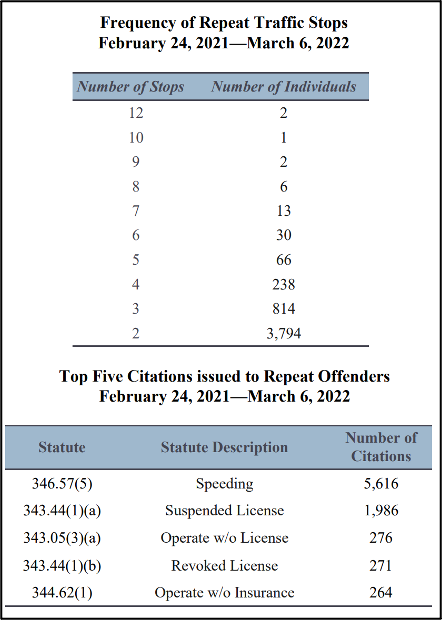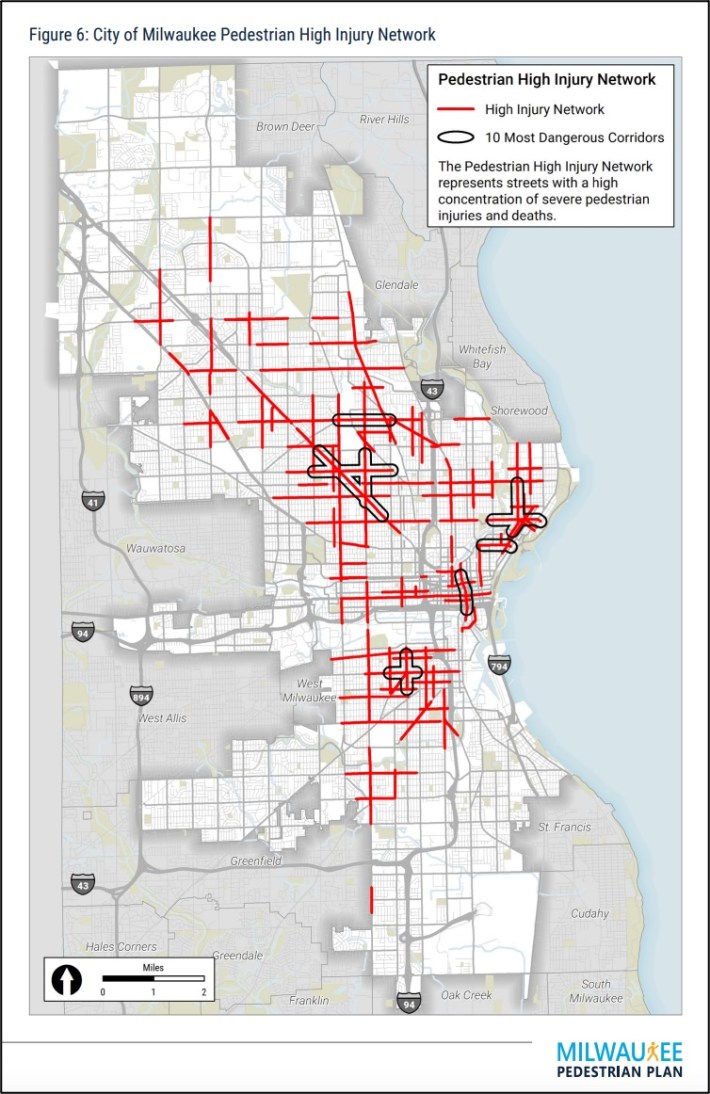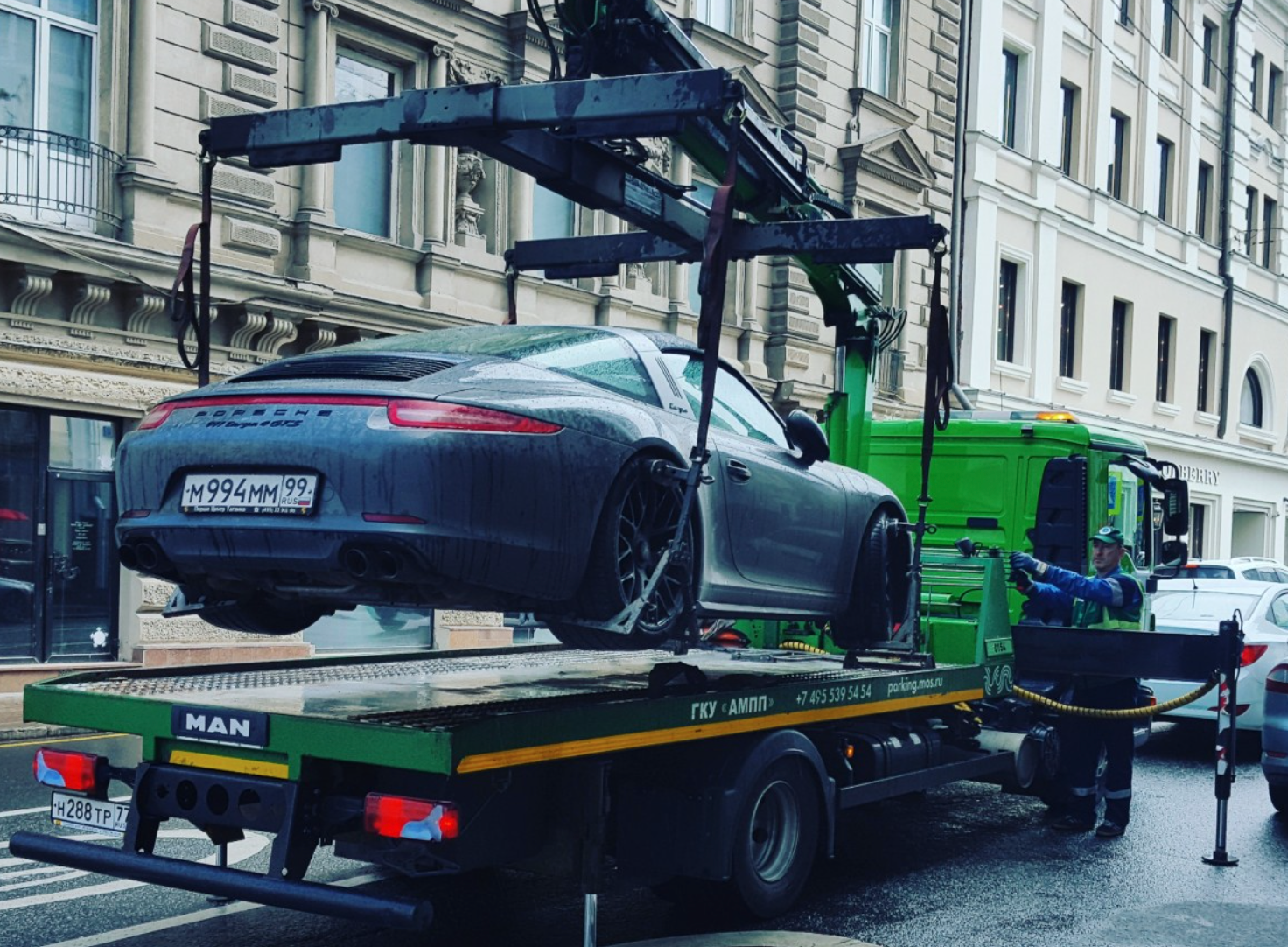How many dangerous driving infractions should one motorist be able to rack up before he loses his car — and will taking it away really make streets safer, if the design of those streets itself isn't safe?
Those are the questions at the heart of the debate around a first-of-its-kind ordinance currently under consideration in Milwaukee that would authorize city police to bring civil charges against motorists who repeatedly commit roadway crimes like drunk driving, speeding, and running red lights. Once in civil court, drivers with multiple offenses could legally have their cars taken away — with no definitive path to get them back.
Recidivist drivers can already face criminal charges, which often results in them losing their licenses temporarily or permanently — but in auto-dependent Milwaukee, many still drive anyway. In the 13 months between February 2021 and March 2022, a dozen Cream City motorists accrued eight or more reckless driving citation each; all had either lost their licenses or had them suspended by the time they committed their latest violations.
The city emphasized that this cohort of drivers would be the primary target of the new ordinance, and that less prolific repeat offenders would likely be spared.
“There certainly are individuals [for whom] receiving citations effects behavior,” Nick DeSiato, chief of staff for the Milwaukee Police department, testified before the City Council on March 10. “But then we also know that there are individuals out there who have been pulled over 12 times [in 13 months]. … The system has done its job from an administrative [standpoint], where if you have so many violations, you lose the right to lawfully drive. This is where we’re looking for those additional tools, [like vehicle impoundment].”

The ordinance won unanimous approval from the city's Public Safety and Health Committee, which applauded the action as necessary to get the deadliest drivers off the road — even if it won't solve Milwaukee's traffic violence crisis on its own.
“I want to be clear that this is not going to solve our problems,” said Alderman Michael Murphy, who introduced the legislation. “We may be able to go after 10, 15 people who are putting us all at risk. Getting a letter from the police saying, ‘Listen, we’re going to sue you, and we may take your vehicle’ – it might be able to change behavior.”
'We're still wading through the lawsuits'
The specifics of the ordinance, though, left some wondering whether that was really true — and what unintended consequences might result from the law.
Most notably, the measure would give police broad discretion to decide when, exactly, a driver has become a true public nuisance who needs to be stripped of her vehicle immediately, rather than an occasional danger to her fellow road users who would learn her lesson after a couple tickets.
Additionally, an unusually broad range of roadway crimes could put motorists at risk of losing their cars; driving too slowly, for instance, was also among the qualifying violations, in addition to more obviously dangerous behavior, like drag racing. The law also didn't specify how long a driver's car could legally be impounded by police, or what she'd need to do to prove she had learned how to drive safely enough to merit getting it back — even if other members of her household relied on that vehicle to meet their daily needs.
Those details differ substantially with other cities' similar laws, like New York City's new Dangerous Vehicle Abatement Program, which only empowers the sheriff to seize cars that have been clocked speeding 15 times or running five red lights — and only if the driver fails to take a safety course. It's a threshold that some advocates criticize as too generous, but at least delivers a predictable consequence to motorists who persistently ignore well-known traffic laws right in front of the city's ubiquitous traffic cameras.
Unlike the Big Apple's safety course, Milwaukee's ordinance didn't specify a similar remedy. And because automated enforcement is currently banned under Wisconsin state law, every violation that might lead to an impoundment would need to be hand-delivered by an officer, usually with a gun on his or her hip.
No vehicle should be capable of exceeding any posted speed limit but until then I am not opposed to punitive based measures, as long as we clarify that the right people are being punished.
— marklhaag (@marklhaag) March 22, 2022
Critics say that's a recipe for danger in a notoriously segregated city that's still reckoning with the ongoing impacts of the so-called "urban renewal" era and other forces of systemic racism — including a police department that critics say already overpolices its Black and brown neighborhoods. Between 2010 and 2020, Milwaukee PD has paid more than $40 million in settlements related to officer misconduct; many of those incidents, which disproportionately involved violence against Black residents (much of it lethal), began in the context of traffic stops.
“We know what happens when too much of the legislation is allowed to be at the discretion [of officers]," said Alderwoman Miele Coggs during the committee debate. "We’re still wading through the lawsuits on some of these [types of cases]."
'People Always Seem to Find a Way To Drive'
Coggs, who identifies as African-American, ultimately supported the passage of the ordinance out of committee — but she wasn't alone in her concerns about handing officers even more discretion over street safety.
In a last-minute letter delivered less than 24 hours before the measure was supposed to be debated by the full council, the Milwaukee City Attorney's office expressed concerns that "a single violation of a relatively minor traffic law [could be] declared a nuisance per se" and noted that "a court would likely conclude that the proposed ordinance is unreasonably broad." That opinion effectively halted the effort until the measure can be re-written and re-introduced with the Attorney's sign-off.

In the meantime, though, the streets in Milwaukee's Black neighborhoods remain dangerous — and not just when it comes to police brutality. Advocates note that a community group in the historically Black Sherman Park neighborhood has supported the reckless driving ordinance since the beginning, and that their neighborhood experiences some of the highest rates of reckless driving in the city.
Sustainable transportation advocates point out, though, that Sherman Park sits at the nexus of some of the city's widest, fastest, and most dangerously-designed roads, which studies show can compel even well-intentioned drivers to hit the gas and check out behind the wheel.
Taking away the cars of a dozen or so super-recidivists won't address that underlying problem — especially since even the worst of the worst may not have other ways to get around on the Milwaukee's under-funded public transit system, incomplete bike lane network, or shoddy sidewalks. Advocates say getting local leaders to understand the role that car dependence plays in local road safety efforts can be a struggle.
"People always seem to find a way to drive," said Caressa Givens, Milwaukee community projects manager for the Wisconsin Bike Federation. "We have people who have non-traffic-related violations that have barred them from having a driver's license, and they end up driving for years without a registered vehicle anyway — and they’re doing that out of necessity, not ill will."
Givens describes her city as "over-driven and over-parked, as [car dependence expert] Donald Shoup would say," and says she understands why some have called for expanding the powers of law enforcement in hopes of making streets safer — and de-emphasized effective, but slower strategies, like building self-enforcing roads.
"Everybody wants an immediate solution," she adds. "But there’s danger that when we focus so much of our attention on the worst drivers, because they tend to be people who live in Black and brown communities [where dangerous roads are commono], and then it becomes an issue of 'us' vs. 'them'...I’m a person of color who lives in a predominantly White neighborhood, and my neighbors treat this like a 'them' problem. But there are poor driving habits happening all across the city."
The Milwaukee Police Department did not confirm what percentage of its "most egregious repeat offenders" list were people of color, but the percentage of BIPOC traffic violence victims is alarmingly high. As crash deaths declined statewide, fatality rates for Black road users in Wisconsin more than doubled between 2013 and 2020.
Until the city reckons with dangerous roads in neighborhoods of color, Givens fears those numbers may not budge — no matter how many cars the city claims from multiply-cited motorists.
"Our fight, right now, is trying to get ... better road engineering, because we’re big believers in self-enforcing streets," she adds. "[Even if we get speed cameras], we want to end up in a situation, someday, where traffic is slow enough that we can safely shut them down."






